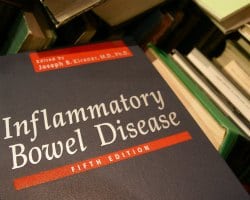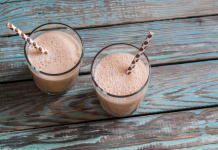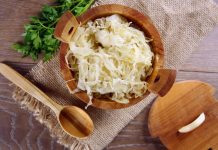
A close relative of mine has recently been diagnosed with Crohn’s disease. I sympathize with her because I know it can be a miserable experience. As I started to write this article on Crohn’s I was amazed at some of the statistics.
According to the National Institute of Allergy and Infectious Diseases (NIAID), a division of the US Department of Health and Human Services, one in 500 people suffer from Inflammatory Bowel Disease (IBD), the group of diseases that includes Crohn’s Disease and Ulcerative Colitis. The National Institute of Diabetes & Digestive & Kidney Diseases (NIDDK) reports similar numbers.
Approximately 544,000 people suffer from IBD in the United States and there are typically three or four new cases per 100,000 people reported annually.
Researchers found that the highest prevalence of IBD worldwide was reported in Canada and Europe, whereas Asia had a lower prevalence of IBD. In developing nations, IBD was a rare occurrence; however, as these nations have become more industrialized, the incidence of IBD has increased.
Gender differences were inconsistent, suggesting that the IBD occurred equally among females and males.
The first thing to do is get a definition of both Crohn’s Disease and Ulcerative Colitis.
Crohn's Disease: can affect any part of the gastrointestinal tract, from the mouth to the anus. Inflammation occurs in patches throughout the tract, and the inflammation can affect every layer of affected bowel tissue.
Ulcerative Colitis: affects only the inner layer of the colon (large intestine). It always starts in the rectum and may extend as a continuous inflammation throughout the rest of the colon.
What causes Inflammatory Bowel Disease (IBD)?
It is likely caused by a combination of factors.
- There may be a genetic predisposition, and some trigger in the environment sets up the inflammation.
- In the predisposed individual, inflammation does not go away. Instead of helping, the intestinal immune system may allow the inflammation to persist.
- Recent research suggests that an overgrowth of bad bacteria in the intestinal tract may be a contributing cause. Many sufferers have found that certain medications such as antibiotics have triggered attacks (this is possible if the antibiotics have killed off the good bacteria in their intestinal tract, which allows for bad bacteria to overgrow).
What are the signs and symptoms of Inflammatory Bowel Disease (IBD)?
Crohn’s Symptoms
Since the disease can affect any part of the gastrointestinal tract, people with Crohn’s Disease have very diverse symptoms. The most common symptoms are: cramping in the abdomen, diarrhea, loss of appetite and weight loss. Other symptoms may include: fatigue, nausea, vomiting, bloating, canker sores, distinct swelling in the abdomen, perianal disease (disease around the anus), unexplained fevers, sores around the anus, pain or swelling in the joints and anemia.
Some children with Crohn’s disease may grow more slowly than their peers, and puberty may start late, but they will eventually catch up. This is likely because they are not absorbing nutrients properly.
Colitis Symptoms
Symptoms of colitis will depend upon the type of colitis, but in general, colitis most often is associated with abdominal pain and diarrhea. Other colitis symptoms may include: blood in the bowel movement, the feeling of constantly needing to pass stools even if bowels are empty,constant pain or abdominal pain coming in waves, building to diarrhea, and then waning, fever, chills, and other signs of infection and inflammation depending upon the cause of colitis.
IBD Diet for Crohn's Disease and Colitis
The dietary component for both Crohn’s and Colitis is similar:
- Drink lots of good quality water (8 – 10 glasses daily) to keep the body hydrated and prevent constipation.
- Take a daily multivitamin-mineral supplement to replace lost nutrients.
- Eat a high fibre diet when IBD is under control. Some people find cooking and steaming vegetables more tolerable than eating them raw.
- During a flare up, limit high fibre foods and follow a low fibre diet to give the bowel a rest and minimize symptoms.
- It is very important to continue nourishing your body even during a flare-up. Try small frequent meals. Eating a high protein diet with lean meats, fish and eggs, may help relieve symptoms of IBD.
- Limit caffeine, alcohol and artificial sweeteners as these may exacerbate IBD symptoms. (For a great tasting coffee alternative, try Teeccino.)
- Limit gas-producing foods such as cabbage-family vegetables (broccoli, cabbage, cauliflower and Brussels sprouts), dried peas and lentils, onions and chives, peppers and carbonated drinks
- Reduce fat intake if part of the intestines have been surgically removed. High fat foods usually cause diarrhea and gas for this group of patients.
- If the ileum (part of the small intestines) has been resected, a Vitamin B12 injection may be required.
- Studies have found that Omega 3’s may be helpful in managing IBD. You can find this in supplement form or get it from fish or ground flax seeds.
- Probiotics are imperative to maintain the good bacteria in the intestinal tract and aids in the recovery of the intestines.
There are also natural supplements that you can find in your local health food store to help with Crohn’s, colitis. Look for a formula which contains a combination of ingredients to help rebuild and repair the intestinal tract as well as help with the cramping, spasming and inflammation. L-Glutamine increases intestinal villous height, stimulates mucosal cell growth in the intestinal tract, and helps to maintain mucosal cell integrity and N-Acetyl-D- Glucosamine is required for tissue repair mechanisms.
Additional ingredients such as cranesbill root will help contract blood vessels thereby stopping internal bleeding and is also helpful for diarrhea and chronic dysentery and herbs such as goldenseal, turmeric and ginger are anti-inflammatory, anti-spasmodic and anti-microbial.
Complementary and Alternative Medicine for Crohn’s and Colitis
The National Center for Complementary and Alternative Medicine (NCCAM) defines CAM as a group of diverse medical and healthcare systems, practices, and products that are not presently considered part of conventional medicine. Complementary therapies are intended to be used together with conventional treatment, while the term “alternative” implies replacing the treatment you receive from your doctor with one or more approaches that fall outside mainstream medicine. The Crohn’s & Colitis Foundation (CCFA) recommends that anyone considering any of the CAM approaches should discuss them with their doctor, and use CAM as a complement to prescribed medications and not as an alternative to other doctor-recommended treatments for Crohn’s and colitis. CAM therapies may work in a variety of ways. They may help to control symptoms and ease pain, enhance feelings of well-being and quality of life, and may possibly boost the immune system.
The NCCAM divides CAM into four major domains—Mind-Body Medicine, Manipulative and Body-Based Practices, Energy Medicine, and Biologically-Based Practices.
You can use the following questions as a guide to discuss CAM with your healthcare team:
- Are there complementary and alternative therapies you would recommend?
- Have these methods been studied?
- What benefits can I expect from this therapy?
- How will I know if the therapy is working or not?
- Is there a risk this will interfere with standard IBD treatments?
- Are there potential side effects? What should I look out for?
- Do you offer these as part of your practice? If not, can you refer me to a licensed practitioner in the area?
- Are there specific CAM therapies you would advise against?
Caroline Farquhar is a Registered Holistic Nutritionist (RHN) with a degree in Psychology, who also specializes in digestive care and cleansing.
Read More About Inflammation:
Fighting Inflammation With Food
Photo Credit: romana klee/CC 2.0










